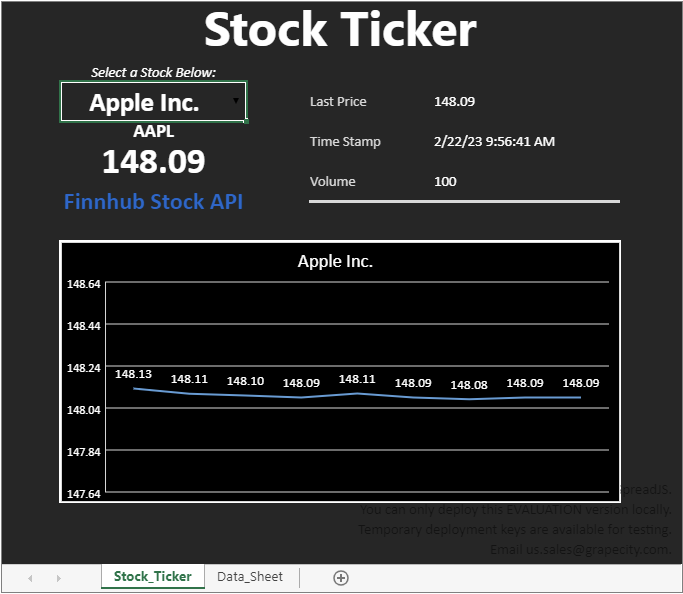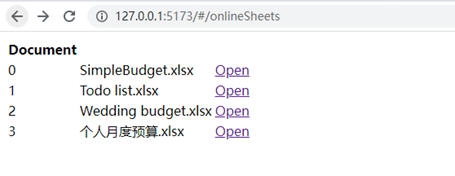Azure ML web服务超时
提问于 2015-06-29 21:57:37
我在Azure中创建了一个简单的实验,并使用一个http客户机触发它。在Azure ML工作区中,执行时一切正常。但是,当我使用http客户端触发实验时,实验超时并失败。为http客户端设置超时值似乎不起作用。
我们是否可以设置这个超时值,这样实验就不会失败?
回答 3
Stack Overflow用户
回答已采纳
发布于 2018-04-01 09:33:08
看起来不可能基于截至2018年4月1日仍被标记为“计划”的特性请求设置这个超时。
2017年开始的MSDN论坛的建议是使用批执行服务,该服务启动机器学习实验,然后异步询问是否已经完成。
下面是Azure ML Web服务管理示例代码的代码片段(所有注释都来自它们的示例代码):
using (HttpClient client = new HttpClient())
{
var request = new BatchExecutionRequest()
{
Outputs = new Dictionary<string, AzureBlobDataReference> () {
{
"output",
new AzureBlobDataReference()
{
ConnectionString = storageConnectionString,
RelativeLocation = string.Format("{0}/outputresults.file_extension", StorageContainerName) /*Replace this with the location you would like to use for your output file, and valid file extension (usually .csv for scoring results, or .ilearner for trained models)*/
}
},
},
GlobalParameters = new Dictionary<string, string>() {
}
};
client.DefaultRequestHeaders.Authorization = new AuthenticationHeaderValue("Bearer", apiKey);
// WARNING: The 'await' statement below can result in a deadlock
// if you are calling this code from the UI thread of an ASP.Net application.
// One way to address this would be to call ConfigureAwait(false)
// so that the execution does not attempt to resume on the original context.
// For instance, replace code such as:
// result = await DoSomeTask()
// with the following:
// result = await DoSomeTask().ConfigureAwait(false)
Console.WriteLine("Submitting the job...");
// submit the job
var response = await client.PostAsJsonAsync(BaseUrl + "?api-version=2.0", request);
if (!response.IsSuccessStatusCode)
{
await WriteFailedResponse(response);
return;
}
string jobId = await response.Content.ReadAsAsync<string>();
Console.WriteLine(string.Format("Job ID: {0}", jobId));
// start the job
Console.WriteLine("Starting the job...");
response = await client.PostAsync(BaseUrl + "/" + jobId + "/start?api-version=2.0", null);
if (!response.IsSuccessStatusCode)
{
await WriteFailedResponse(response);
return;
}
string jobLocation = BaseUrl + "/" + jobId + "?api-version=2.0";
Stopwatch watch = Stopwatch.StartNew();
bool done = false;
while (!done)
{
Console.WriteLine("Checking the job status...");
response = await client.GetAsync(jobLocation);
if (!response.IsSuccessStatusCode)
{
await WriteFailedResponse(response);
return;
}
BatchScoreStatus status = await response.Content.ReadAsAsync<BatchScoreStatus>();
if (watch.ElapsedMilliseconds > TimeOutInMilliseconds)
{
done = true;
Console.WriteLine(string.Format("Timed out. Deleting job {0} ...", jobId));
await client.DeleteAsync(jobLocation);
}
switch (status.StatusCode) {
case BatchScoreStatusCode.NotStarted:
Console.WriteLine(string.Format("Job {0} not yet started...", jobId));
break;
case BatchScoreStatusCode.Running:
Console.WriteLine(string.Format("Job {0} running...", jobId));
break;
case BatchScoreStatusCode.Failed:
Console.WriteLine(string.Format("Job {0} failed!", jobId));
Console.WriteLine(string.Format("Error details: {0}", status.Details));
done = true;
break;
case BatchScoreStatusCode.Cancelled:
Console.WriteLine(string.Format("Job {0} cancelled!", jobId));
done = true;
break;
case BatchScoreStatusCode.Finished:
done = true;
Console.WriteLine(string.Format("Job {0} finished!", jobId));
ProcessResults(status);
break;
}
if (!done) {
Thread.Sleep(1000); // Wait one second
}
}
}Stack Overflow用户
发布于 2015-07-05 19:18:09
确保正确设置了客户端超时值。如果服务器启动web服务超时,那么它将用HTTP代码504 BackendScoreTimeout (或者可能是409 GatewayTimeout)返回一个响应。但是,如果您根本没有收到任何回复,那么您的客户等待的时间就不够长。
通过在ML中运行您的实验,您可以找到大量的时间。转到实验属性,找出它运行了多长时间,然后用大约两倍的时间作为超时值。
Stack Overflow用户
发布于 2015-12-15 04:28:53
在作为web服务发布的Azure实验中,我也遇到过类似的问题。大多数情况下,它运行正常,而有时返回时会出现超时错误。问题是实验本身有一个90秒的运行时间限制。因此,很可能您的实验运行时间超过了这个限制,并返回了一个超时错误。hth
页面原文内容由Stack Overflow提供。腾讯云小微IT领域专用引擎提供翻译支持
原文链接:
https://stackoverflow.com/questions/31130629
复制














